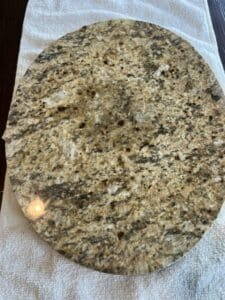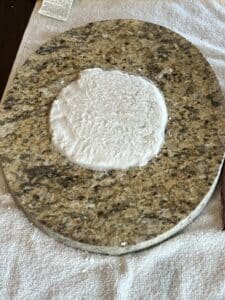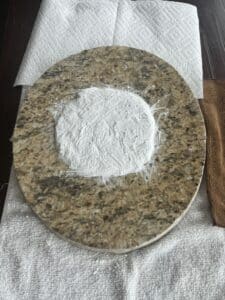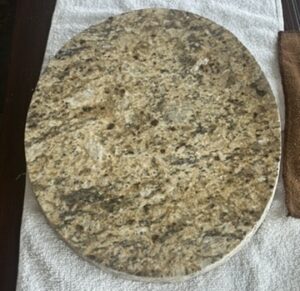-
Mon – Fri: 8 AM – 5 PM
Sat: By Appointment
-
FREE Estimate
(936) 856-8610
We receive a lot of calls from people who have stains in their marble and granite countertops. While natural stone surfaces exude elegance and charm, they are not immune to stains. Whether it’s an accidental spill or a stubborn mark that’s been lingering for ages, knowing how to effectively remove stains from natural stone is essential. Here’s your comprehensive guide to tackling stains and restoring the beauty of your stone surfaces. Once the stain has been removed it is recommended that you contact your local stone professional to have your natural stone professionally sealed to help resist future staining.





When a spill occurs, prompt action is crucial. Follow these steps:
Understanding the type of stain you’re dealing with is essential for effective removal. Consider the stain’s color, location, and the substances the stone is exposed to. This information will guide your choice of cleaning agents and poultice materials.
A poultice is a mixture of a “cleaner” and an absorption medium. Here’s how to use it:
Step 1. Clean and Wet the Area
Clean the area with water or a neutral cleaner. Then wet the area with distilled water.
Step 2. Mix the Poultice and Apply
Choose Your Materials: The most common absorption mediums used by homeowners and many times professionals include diatomaceous earth and baking soda. Some other absorption mediums include paper towels (good for vertical applications), talc and gauze pads.
Step 3. Cover and Tape:
Cover the poultice with plastic wrap (saran wrap) then lightly press all the air out from under the plastic. Tape the edges of the plastic to the stone to help force the cleaner into the stone. You can poke one or two holes in the plastic to allow the poultice to breath if you would like.
Step 4. Let it Work
Allow the poultice to sit for 24 hours before removing the plastic wrap.
Step 5. Let it Dry
Once the plastic is removed WAIT ANOTHER 48 hours UNTIL THE POULTICE IS COMPLETELY DRY. When the poultice is drying, this is when the stain is being lifted from the stone to the absorption medium, so do not rush the process.
Step 6. Remove and Rinse
After the poultice is completely dry, remove the poultice, rinse the area with distilled water, and buff dry with a soft cloth.
If the stain has improved repeat the entire process again. Stains may take multiple applications to fully be removed. If the stain did not improve at all make a poultice with a different cleaner and reapply it to the area. If the stain still does not improve it may be permanent.
With the right approach and patience, you can increase your chances for successfully removing stains from natural stone surfaces and restore their beauty. Whether it’s an oil-based, organic, or metal stain, understanding the type of stain and using the appropriate poultice is key. By following these steps and recommendations, you can bring your stained natural stone back to life. Of course, once you remove the stain it is recommended to have your natural stone professionally sealed. Stain prevention is much easier than stain removal! If you are in the Houston area, contact Beyond Clean Tile to have your natural stone professionally sealed.